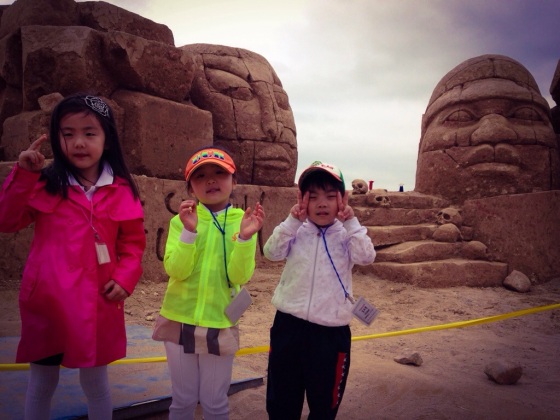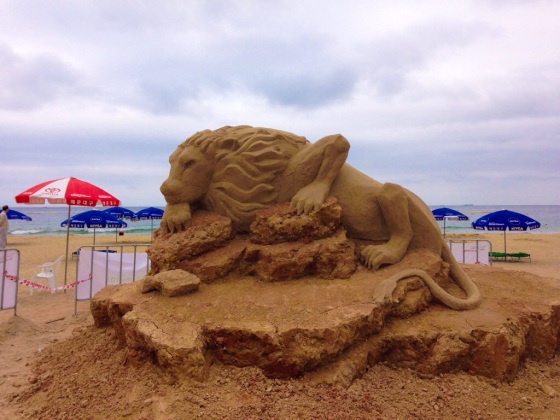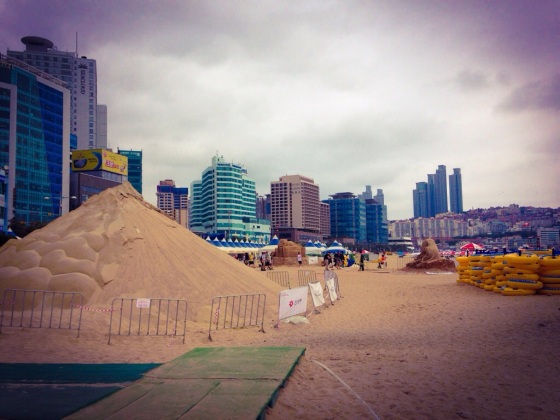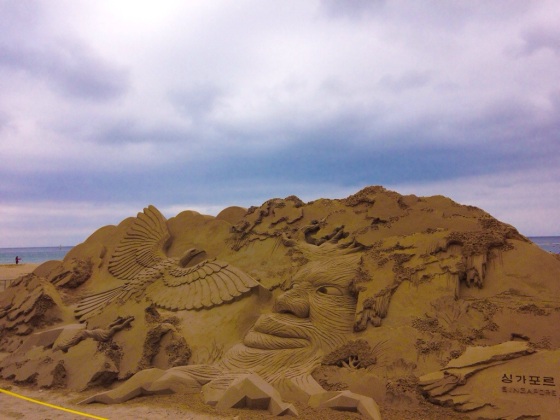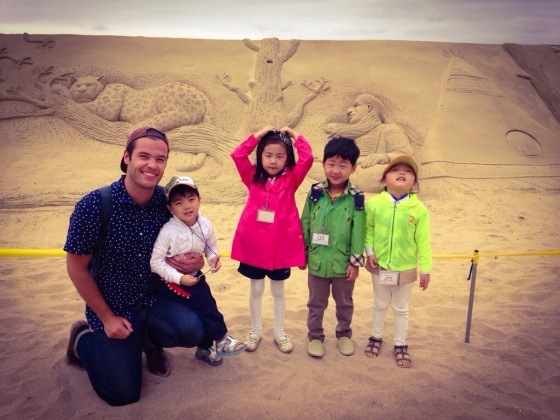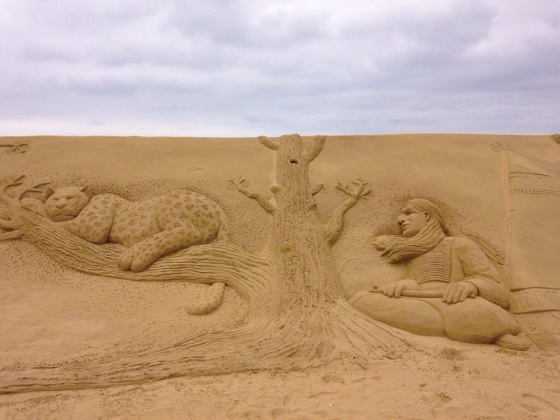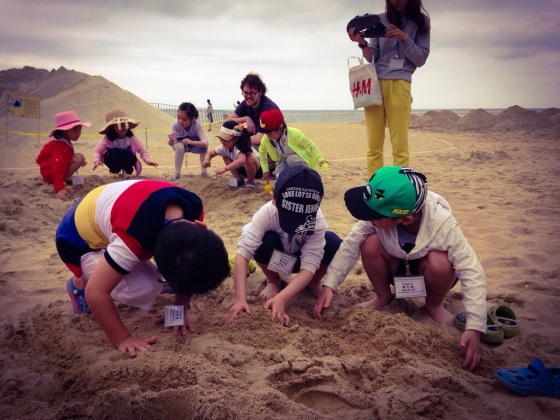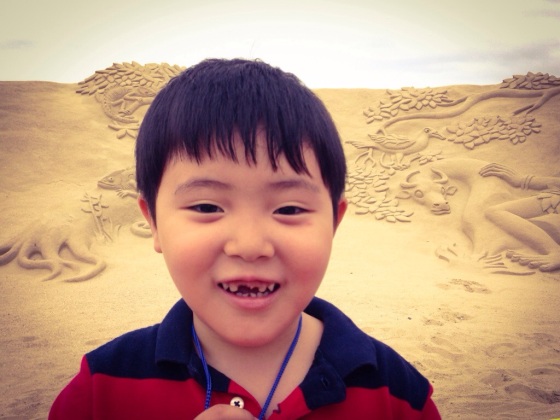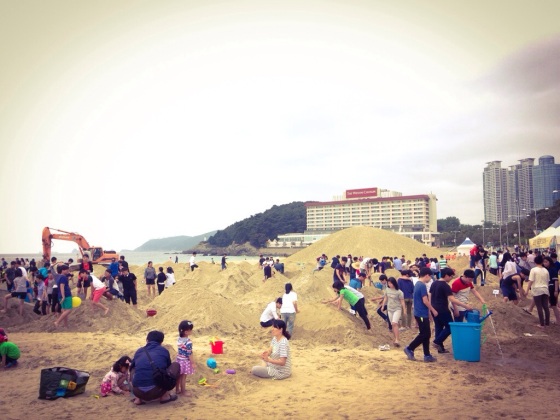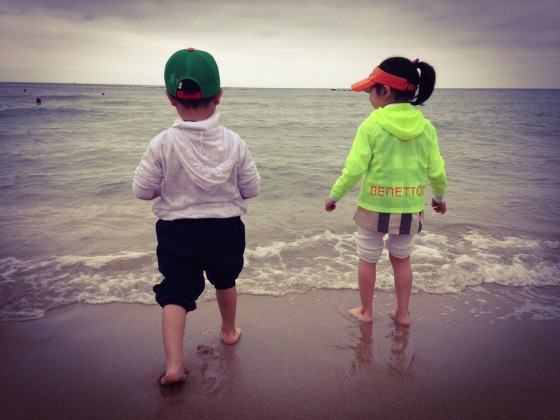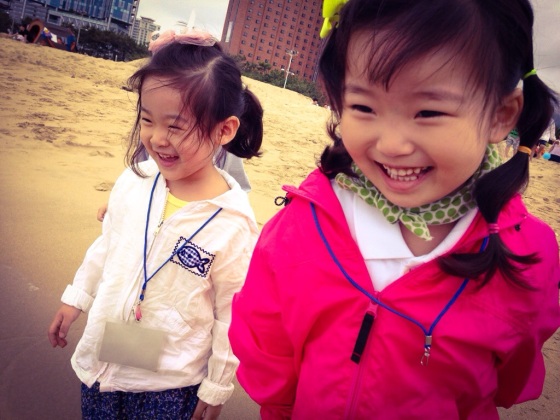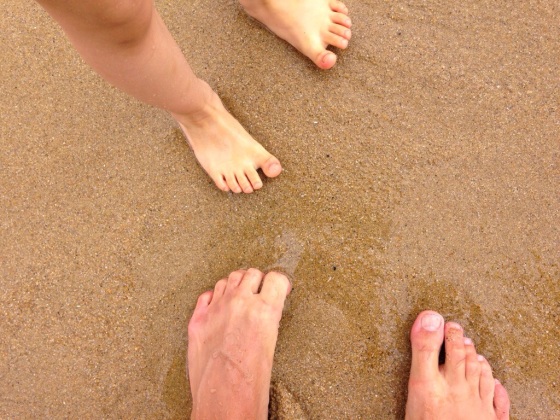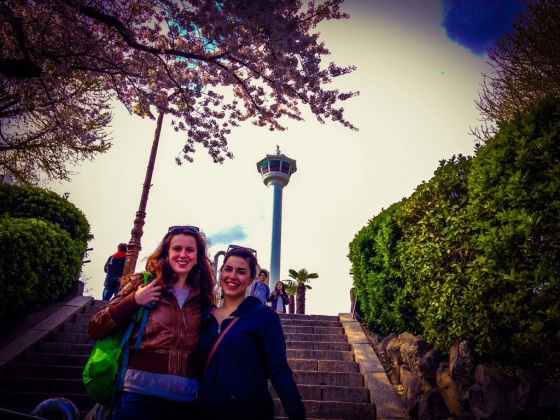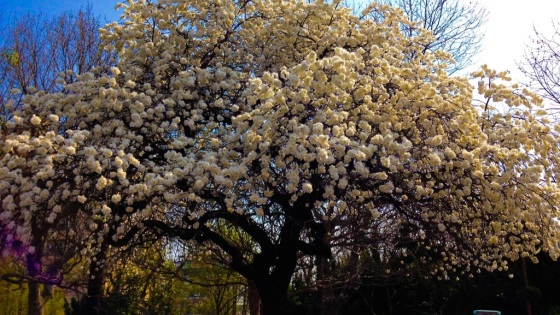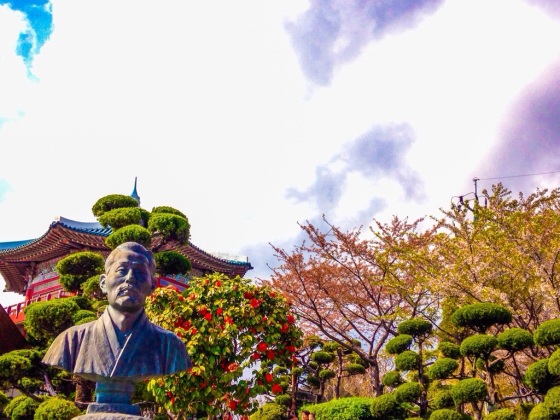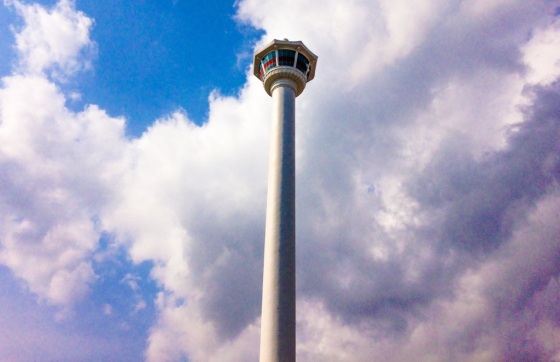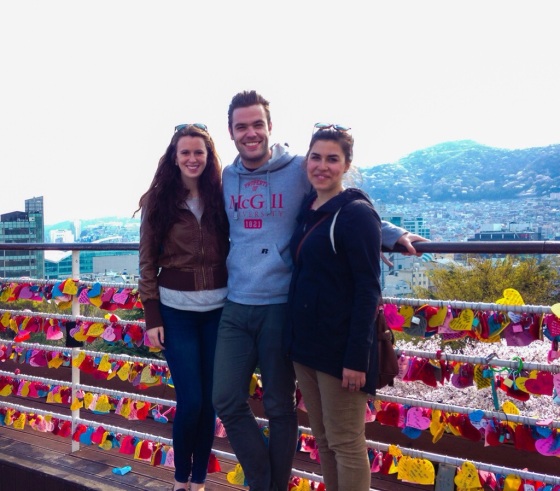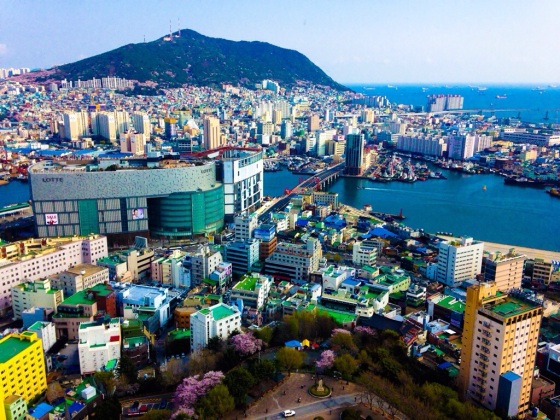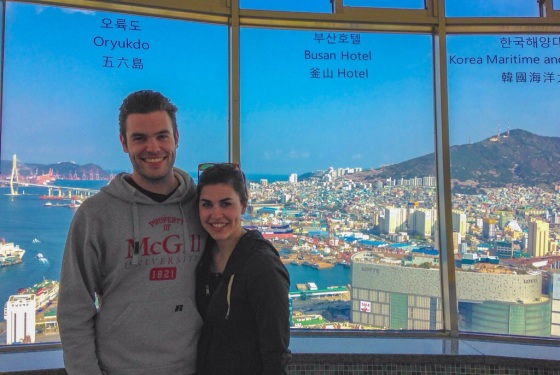This is a Busan Ex-Pat City Guide post. Check out the rest of my list here.
“Just another manic Monday – wish it was Sunday.”
Nope, nope, nope – not today. I woke up this morning in an absolutely chipper mood. Why, you ask? Oh, just a casual Monday morning field trip to the beach for the Haeundae Sand Festival, that’s all!
The Haeundae Sand Festival happens every year on Busan’s largest beach, Haeundae. Despite Busan’s reputation as a coastal town and playing host to five major beaches, this is the South Korea’s only festival based on appreciation for sand (huh?!) Given that it only lasts for three days, my head teacher had to amend the regularly designated field trip day (Friday) in favour of Monday morning. However, this was the best possible outcome since the field trip took me from “totally zonked out” to “z0mg look at all of this energy, I’m the best teacher in the world!”
We arrived at Haeundae Beach mid-morning. I rode with my homeroom students – Aiden, Grace, and Sa-Yeon of Happiness Class. After informing the students of the “beach rules”, (“no eating sand”, “no throwing sand”, no drowning, etc.), we were off to look at the various sculptures scattered across the sand.
The theme of the 2014 Haeundae Sand Festival felt slightly garbled. Featuring Tarzen and Jane as the main players, the festival was (aptly?) named “Through the Sand Jungle”. While there were important elements of environmental awareness and protection throughout (Tarzan and Jane end up saving the beach through sand restoration – yay!), the entire backstory felt like it had been written by one of my fourth-graders and didn’t really add much to the beautiful scenery. I’m all for motifs, but in this case, the backstory was completely unnecessary; methinks a simple “here’s a sand sculpture of a gorilla” would have sufficed.
It’s always so refreshing to see the looks of wonder and excitement on the faces of five year olds. They absolutely marvelled at the giant sculptures featuring lions, rhinoceroses, and other jungle imagery. One of the cooler elements of the Sand Festival was the large sand hill at the end of the beach, towards Marine City. At any given moment, hordes of children could be seen clambering to its peak, only to be unsuspectingly yanked down the hill on a sand board by their parents. Other (admittedly unexplored) elements of the festival included a “sand theatre” where visitors could view short films and documentaries, a sand exploration hall containing seven differently themed rooms, and a sand maze. I silently wept upon learning that the sand maze was not on our itinerary for the day. I do love a good labyrinth!
Towards the end of our time at the beach, the kids were allowed to flex their creative muscles, (something seriously lacking from Korea’s hagwon system, in my opinion), by building sand sculptures and castles, themselves. After dozens of references to Elsa’s ice palace in Frozen, too many pockets filled with seashells, and wails of “teacher, there is sand in my eye!”, it was almost time to leave. My head teacher did allow the children to strip off their socks, sandals, and in my case, leather loafers, to run in and splash about ankle-deep in the ocean. Very wet, much fun, so smiles!
While I’ve heard rumours that this year’s festival was significantly less ostentatious than in year’s past, I thoroughly enjoyed it. The Haeundae Sand Festival is one-stop shopping for the millennial soul – one can marvel at the beautiful sand sculptures at one end of the beach before moving to the opposite end to enjoy a day in the sun. Sand, sightseeing, and sunbathing – Busan’s tried and true recipe for an amazing summer!
Directions
To get to Haeundae Beach, take the Green Line on the Busan Subway (Line 2) to Haeundae Station (stop 203). Go out either exit 3 or 5 and walk straight until you hit the beach (this takes approximately 10 minutes). The Haeundae Sand Festival happens every June for approximately 3 days during the first or second week of June. The 2014 Festival took place from June 6th to the 9th.

